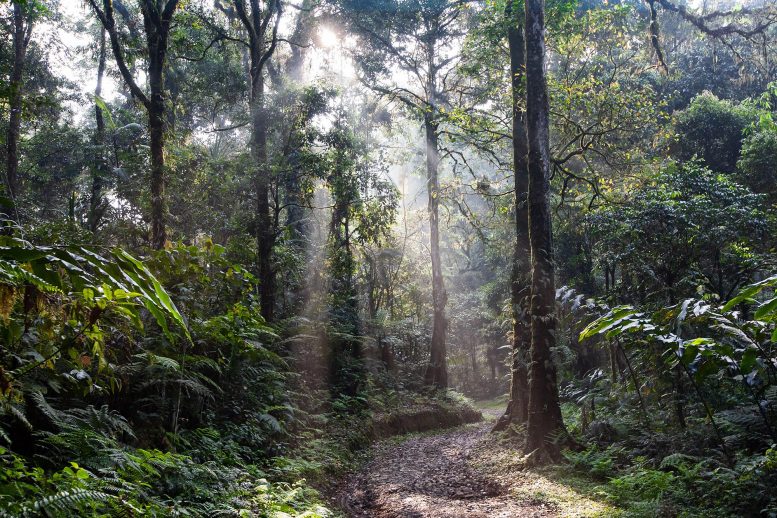By studying how efficiently plants use water, researchers from Swinburne and the University of California have determined how well forests are acclimating to rising levels of carbon dioxide in the atmosphere. The researchers conclude that some drier conifer forests are acclimating two to three times faster to rising carbon dioxide than wetter, conifer forests, meaning they are more efficient in their water use. The results of this research have been published in the journal Nature Communications. This new research provides empirical evidence that could be used to refine models of predicting current and long-term rainfall, and improve the reliability of predictions. It also has implications for how water is stored and used in areas where it is known that plants put less water back into the atmosphere.
Novel patterns emerge
Lead researcher, Swinburne Professor of BioScience and Innovation, Mark Adams, says this study is particularly strong because it draws on data from multiple sources across the world. “Our findings are not reliant on any one study or research group. Our small research team worked for several years to compile and explore the data. A unique feature of the final analysis was the focus on the rate of change.” “Many previous studies have observed that water use efficiency rises with atmospheric carbon dioxide. What hasn’t been clear is the rate of change. Once we focused on that, novel patterns emerged,” he says. Those patterns are backed by other recent US research showing that drier conifer forests are also acclimating to rising carbon dioxide better than wetter conifer forests.
What it means for Australia
The research is hugely significant for the world’s large expanses of tropical forests, but also has implications for Australia. The study showed that on average over the last century, leguminous trees – or trees that produce seeds in pods – used water more efficiently than non-legumes. Much of inland tropical and sub-tropical Australia is dominated by acacias, which are leguminous. “If those Acacia woodlands are transpiring less water as a result of the rise in atmospheric carbon dioxide, then we have a serious job ahead to understand potential consequences for run-off and infiltration to replenish groundwater, as well as impacts on rainfall.” References:
“Rainfall drives variation in rates of change in intrinsic water use efficiency of tropical forests” by Mark A. Adams, Thomas N. Buckley and Tarryn L. Turnbull, 14 August 2019, Nature Communications.DOI: 10.1038/s41467-019-11679-8“Atmospheric evidence for a global secular increase in carbon isotopic discrimination of land photosynthesis” by Ralph F. Keeling, Heather D. Graven, Lisa R. Welp, Laure Resplandy, Jian Bi, Stephen C. Piper, Ying Sun, Alane Bollenbacher and Harro A. J. Meijer, 11 September, 2017, PNAS.DOI: 10.1073/pnas.1619240114
